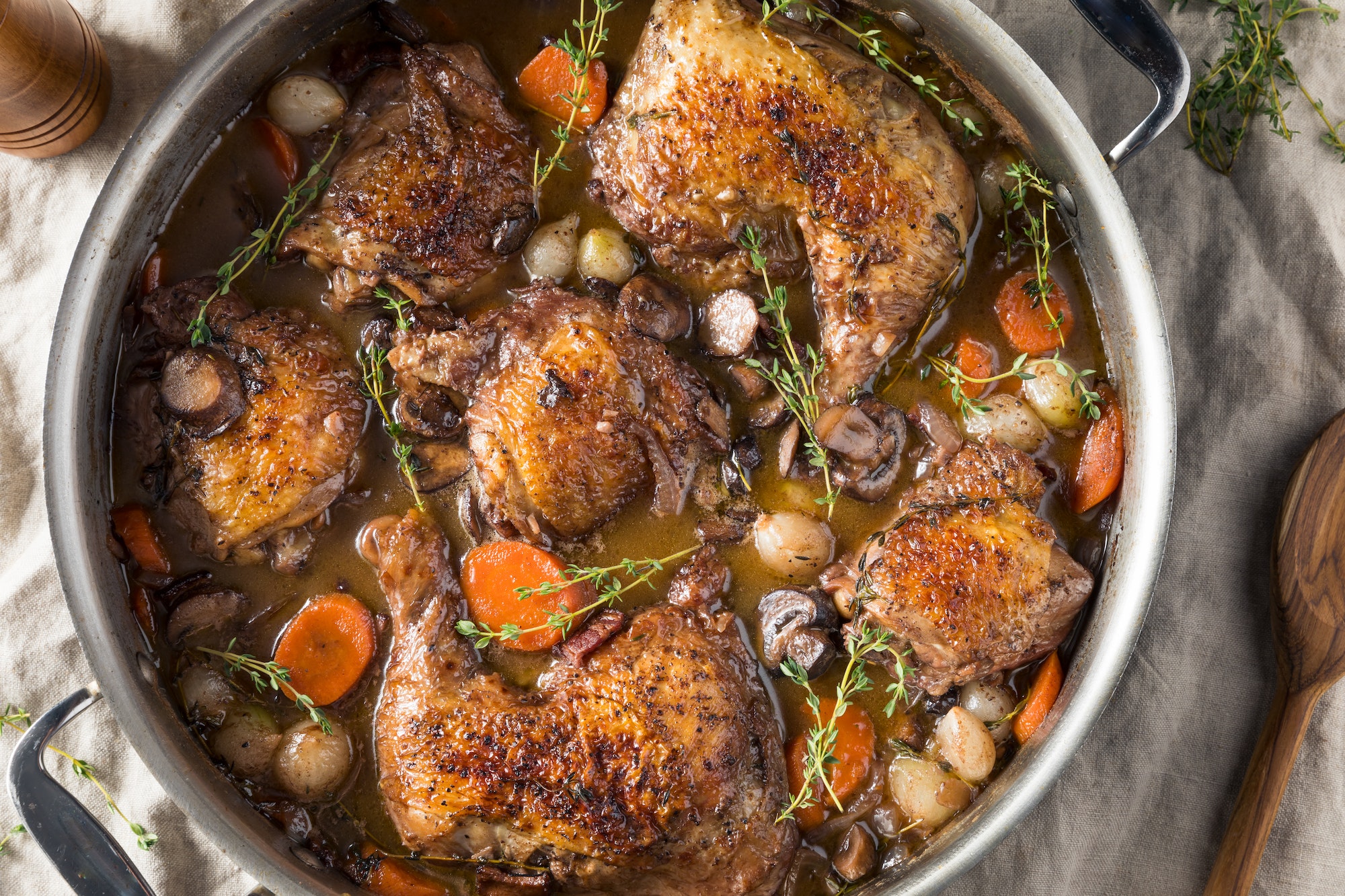The French are known for their love affair with food. French cuisine has a rich history, with a myriad of flavors, ingredients, and techniques that have influenced the culinary world. Among the plethora of dishes France has to offer, there are a few that truly stand out and are celebrated globally. One such dish is the iconic Coq au Vin, a delicious and hearty meal that embodies the spirit of traditional French cooking. In this article, we will delve into the history and origins of this famous French dish, explore some of its variations, and provide tips on how to prepare and enjoy it at home.
The History and Origins of Coq au Vin
Coq au Vin, or “rooster in wine,” is a classic French dish that dates back centuries. It is believed to have originated in the Roman era, and its evolution can be traced through different regions of France. The dish is essentially a slow-cooked chicken or rooster stew, simmered in red wine along with mushrooms, onions, and bacon. The combination of these ingredients results in a rich, flavorful, and satisfying meal that is beloved by both locals and tourists alike.
The dish’s name, “coq” refers to the rooster, which was traditionally the primary source of meat in French rural communities. While roosters are tougher and less tender than hens, slow-cooking them in red wine would tenderize the meat and infuse it with the rich flavors of the wine, herbs, and vegetables used in the recipe. Over time, though, more tender chicken became the preferred choice for this dish, which is now more commonly used in its preparation.
Coq au Vin is often attributed to the Burgundy region of France, but variations of the dish can also be found in other regions such as the Rhône-Alpes, Alsace, and Champagne-Ardenne, where local wines are used to add a unique twist to the recipe. Regardless of the region, this dish has become an integral part of French gastronomic heritage and continues to be celebrated in households and restaurants across the country.
Different Variations of Coq au Vin: A Regional Affair
Just as with many other traditional French dishes, Coq au Vin has evolved through the years, taking on different flavors and ingredients from various regions of France. Each region has its own unique twist on the classic recipe, using local ingredients to enhance the dish’s flavor and showcase the area’s culinary identity.
Coq au Vin Jaune
The Jura region in eastern France is famous for its Vin Jaune, a golden, sherry-like wine with a distinctive nutty flavor. In this variation, the chicken is simmered in Vin Jaune instead of red wine, resulting in a lighter, more delicate dish with a unique, complex flavor profile.
Coq au Riesling
This Alsatian version of Coq au Vin incorporates the fruity, aromatic white wine Riesling into the dish. The use of Riesling creates a lighter, more subtle flavor, allowing the other ingredients such as the mushrooms and onions to truly shine.
Coq au Champagne
As the name suggests, this variation of Coq au Vin hails from the famous Champagne region of France. In this version, the chicken is cooked in Champagne, the region’s popular sparkling wine, giving the dish an elegant and refined taste that is perfect for special occasions.
Tips for Preparing and Enjoying Coq au Vin at Home
Making Coq au Vin at home might seem intimidating, but with the right ingredients and a bit of patience, you can create a delicious and comforting meal that is sure to impress your guests. Here are some tips to help you prepare and enjoy this classic French dish:
- Choose the right wine: The wine is a crucial component of Coq au Vin, so be sure to use a good-quality red wine that you would enjoy drinking. Ideally, opt for a wine from France, such as a Burgundy or a Côtes du Rhône, to stay true to the dish’s origins.
- Take your time: Coq au Vin is a slow-cooked dish, so don’t rush the process. Allow the chicken to cook gently and thoroughly, as this will help to tenderize the meat and meld the flavors together.
- Use fresh herbs and ingredients: Fresh herbs such as thyme, rosemary, and parsley can make all the difference in your Coq au Vin. Be sure to also use fresh vegetables and high-quality bacon or lardons to enhance the dish’s flavors.
- Pairing suggestions: Coq au Vin is best served with simple, rustic sides that complement the dish’s rich flavors. Some classic options include creamy mashed potatoes, crusty French bread, or even buttered egg noodles. And, of course, don’t forget to enjoy your meal with a glass of French wine!
In conclusion, Coq au Vin is a staple of French cuisine, boasting a rich history and a delectable taste that has captured the hearts of food lovers around the world. Its regional variations showcase the diversity of France’s culinary landscape and offer unique perspectives on this classic dish. So, the next time you’re in the mood for a taste of France, why not try your hand at preparing Coq au Vin, and experience a true gastronomic heritage that has stood the test of time. Bon appétit!

